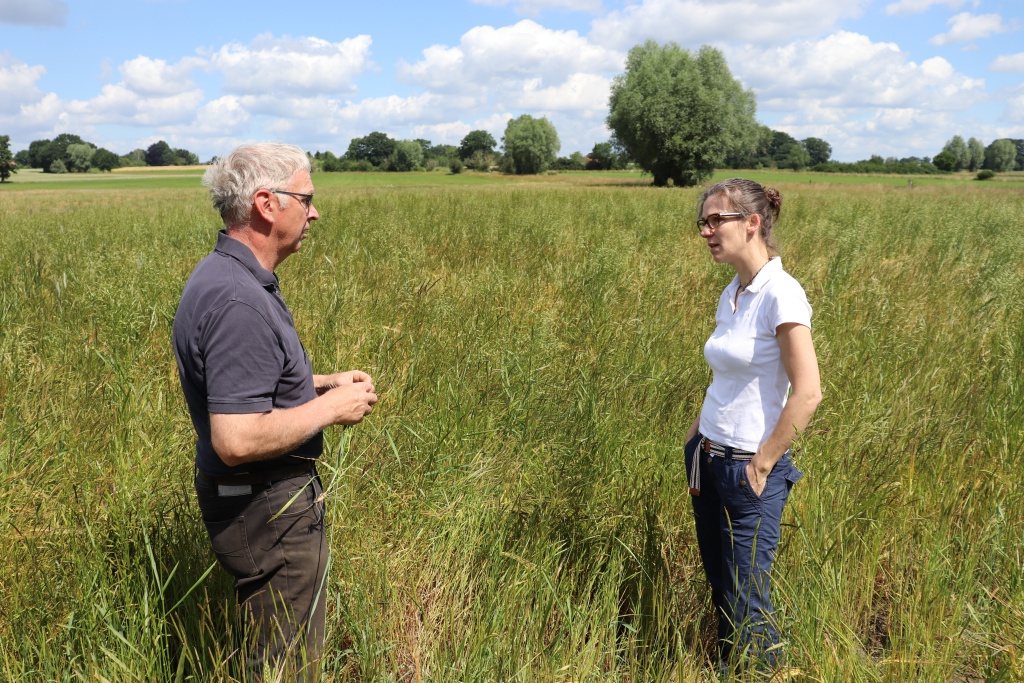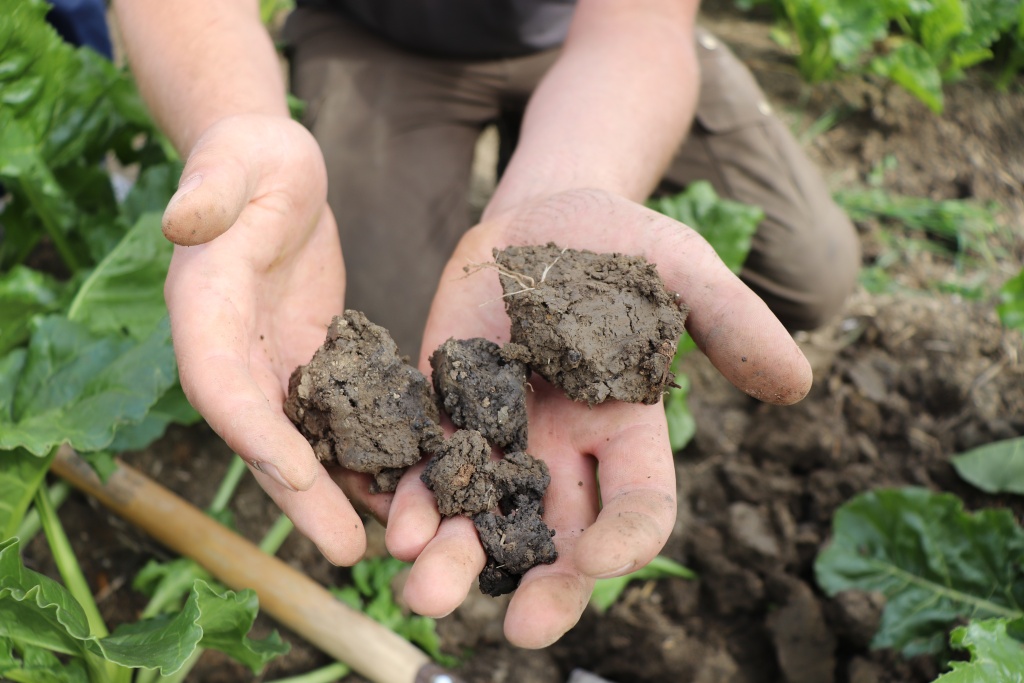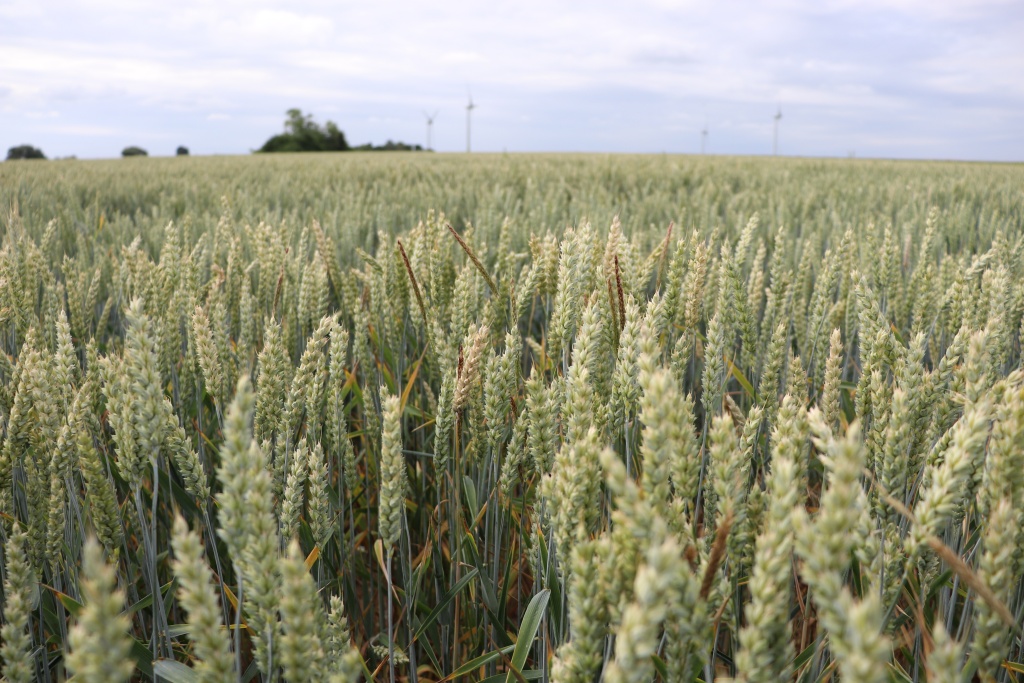Germany
July 24, 2020
Quelle: Laser Zentrum Hannover e.V. (LZH)

Farmer Friedel Könecke from Isernhagen makes his wheat field available for testing the laser weed control. Here, he is talking to the LZH project manager Dr. Merve Wollweber. (Photo: LZH)
Grasses such as slender meadow foxtail and windgrass have become an acute problem on agricultural land. In the event of severe infestation, farmers are threatened with having to take agricultural fields out of production altogether. To develop alternatives in the fight against weeds and herbicide resistance, the Laser Zentrum Hannover e.V. (LZH) is now testing a laser-based approach for its practicality in the LURUU research project together with two farmers from the Hannover region, the Netzwerk Ackerbau Niedersachsen e.V. (NAN) and the Plant Protection Office of the Lower Saxony Chamber of Agriculture (LWK).
The basis for the laser-based approach is a very accurate detection of weeds using a camera and an object recognition software. A laser is then supposed to specifically irradiate and damage the growth center of the weeds. Initial preliminary tests have been promising. In the new project, this approach is to be extended to grasses such as slender meadow foxtail and windgrass. In contrast to dicotyledonous plants, the growth center of grasses is more difficult to locate.

A joint view down to the last detail - many factors must be taken into account to successfully combat weeds with the laser – for example the soil properties of the agricultural areas. (Photo: LZH)
Avoiding resistances
In the LURUU research project, scientists at the LZH are now training an image recognition software to reliably recognize the dicotyl weeds slender meadow foxtail and windgrass in different growth stages and sizes. Additionally, the project aims to develop a robust, field-suitable, and above all mobile laser unit that combines a plant recognition and the laser system. The partners want to test the system then on infested areas. The farmers, the NAN, and the plant protection office of the LWK will advise and test the approach for its practical suitability. The aim is also to develop a strategy for avoiding resistances in herbicides. As reduced herbicide use can slow down the development of resistance.

Avoiding herbicide resistances – in the future, lasers could physically control weeds on agricultural fields. (Photo: LZH)
Giving crops growth advantage, preserving biodiversity
The damage to the weeds by the laser is purely thermal. The crop gets the decisive growth advantage: and thus wins the battle for light, water, and nutrients. With this approach, the weeds would not necessarily have to be killed completely. As part of integrated crop protection, this could therefore reduce herbicide use against grasses, prevent herbicide resistance, and increase biodiversity in the field.
For farmers, the problem of resistances is already very real. The farmer Friedel Könecke from Isernhagen, who is involved in the project, describes his motivation for participating in the project as follows: "Continuing to use many combinations of active ingredients creates to more and more difficulties. I have a wide crop rotation, but still have great problems in controlling grasses safely.” He would like to pass on the hoped-for knowledge advantage to his successor on the farm. "I consider myself innovative and open-minded and would like to be able to help with my ideas."
The second farmer in the project, Bernd Dröse, based in Klein Lobke (near Sehnde), is already accompanying and supporting trials on his agricultural fields, especially those against foxtail in wheat cultivation. He hopes: "The existing methods within the scope of arable farming possibilities, flanked by extensive herbicide measures, will hopefully be supplemented or eventually replaced by a functioning laser treatment.
About LURUU
The project "Laser application for weed control in resistant grasses and weeds" – LURUU is funded by the Chamber of Agriculture of Lower Saxony from EAFRD funds within the Euro-pean Innovation Partnership "Productivity and Sustainability in Agriculture" (EIP Agri).
The operational group consists of two farmers from the Hannover region, the Netzwerk Ackerbau Niedersachsen, e.V. (NAN), the Plant Protection Office of the Lower Saxony Chamber of Agriculture and the LZH.
Laser Zentrum Hannover e.V. (LZH)
As an independent, non-profit research institute, the Laser Zentrum Hannover e.V. (LZH) stands for innovative research, development, and consulting. The LZH is supported by the Niedersachsen Ministry of Economic Af-fairs, Employment, Transport and Digitalisation and is dedicated to the selfless promotion of applied research in the field of photonics and laser technology. Founded in 1986, over 170 employees are now working for the LZH.
The focus of the LZH lies in the fields of optical components and systems, optical production technologies, and biomedical photonics. Interdisciplinary cooperation between natural scientists and mechanical engineers makes innovative approaches to challenges from the most different areas possible: from the development of components for specific laser systems to process developments for the most diverse laser applications, for example for medical technology or lightweight construction in the automotive sector. Eighteen spin-off compa-nies have emerged from the LZH up to now. Thus, the LZH has created a strong transfer between fundamental science, application-oriented research, and industry.
Alternative: Laser – Neue Strategie im Umgang mit resistenten Unkräutern
Ungräser wie Ackerfuchsschwanz und Windhalm sind mittlerweile ein akutes Problem auf landwirtschaftlichen Flächen. Bei starkem Befall droht Landwirten, Flächen ganz aus der Produktion nehmen zu müssen. Um Alternativen im Kampf gegen Unkräuter und Herbizidresistenzen zu entwickeln, erprobt das Laser Zentrum Hannover e.V. (LZH) nun im Forschungsvorhaben LURUU zusammen mit zwei Landwirten aus der Region Hannover, dem Netzwerk Ackerbau Niedersachsen e.V. (NAN) und dem Pflanzenschutzamt der Landwirtschaftskammer (LWK) Niedersachsen einen laserbasierten Ansatz auf seine Praxistauglichkeit.
Grundlage für den laserbasierten Ansatz ist eine möglichst genaue Erkennung der Unkräuter mit einer Kamera und einer Objekterkennungssoftware. Mit einem Laser soll sehr spezifisch das Wuchszentrum des Unkrauts bestrahlt und geschädigt werden. Erste Vorversuche waren vielversprechend. Im neuen Projekt soll dieser Ansatz nun auch auf Gräser wie Windhalm und Ackerfuchsschwanz ausgeweitet werden. Bei Gräsern ist im Gegensatz zu zweikeimblättrigen Pflanzen das Wuchszentrum schwieriger zu lokalisieren.
Resistenzen vermeiden
In dem Forschungsvorhaben LURUU trainieren die Wissenschaftlerinnen und Wissenschaftler des LZH nun eine Bilderkennungssoftware darauf, die Ungräser Ackerfuchsschwanz und Windhalm in unterschiedlichen Wachstumsstadien und -größen zuverlässig zu erkennen. Des Weiteren wollen sie in dem Projekt eine robuste, feldtaugliche und vor allem mobile Lasereinheit entwickeln, die die Pflanzenerkennung mit dem Lasersystem kombiniert. Dieses werden sie auf befallenen Flächen testen. Die Landwirte, das NAN und das Pflanzenschutzamt der LWK beraten und prüfen den Ansatz auf seine Praxistauglichkeit. Das Ziel ist dabei, auch eine Strategie zur Resistenzvermeidung bei Herbiziden zu entwickeln. Denn ein geringerer Einsatz von Herbiziden kann die Bildung von Resistenzen verlangsamen.
Wuchsvorteil für Nutzpflanzen nutzen, Artenvielfalt erhalten
Die Schädigung des Unkrauts durch den Laser ist rein thermisch. Die Nutzpflanze erhält dabei den entscheidenden Wuchsvorteil: und gewinnt so den Kampf um Licht, Wasser und Nährstoffe. Das Unkraut müsste dabei nicht zwangsläufig komplett abgetötet werden. Dieser Ansatz könnte daher als Teil des integrierten Pflanzenschutzes den Herbizideinsatz gegen Gräser reduzieren, Herbizidresistenzen vorbeugen und die Biodiversität auf dem Acker erhöhen.
Für die Landwirte ist das Problem der Resistenzen bereits sehr real. Der am Projekt beteiligte Landwirt Friedel Könecke aus Isernhagen umschreibt seine Motivation im Projekt mitzuwirken so: „Ein Weiterso mit vielen Wirkstoffkombinationen führt zu immer mehr Schwierigkeiten. Ich habe selber eine weite Fruchtfolge, aber dennoch große Probleme, Gräser sicher zu bekämpfen.“ Den erhofften Wissensvorsprung möchte er auch seinem Hofnachfolger weitergeben. „Ich halte mich für innovativ und aufgeschlossen und möchte mit meinen Ideen weiterhelfen können."
Der zweite Landwirt im Projekt Bernd Dröse mit Betriebssitz in Klein Lobke (bei Sehnde) begleitet und unterstützt bereits weitere Versuchsanstellungen auf seinen Ackerflächen, insbesondere solche gegen Ackerfuchsschwanz im Weizenanbau. Er hofft: „Die bisherigen Methoden im Rahmen der ackerbaulichen Möglichkeiten flankiert durch umfangreiche Herbizidmaßnahmen, würden durch eine funktionierende Laserbehandlung ergänzt oder irgendwann ersetzt werden können."
Über LURUU
Das Projekt Lasereinsatz zur Unkrautregulierung bei resistenten Ungräsern und Unkräutern – LURUU wird gefördert von der Landwirtschaftskammer Niedersachsen aus Mitteln des ELER-Fonds im Rahmen der Europäischen Innovationspartnerschaft „Produktivität und Nachhaltigkeit in der Landwirtschaft" (EIP Agri).
Die Operationelle Gruppe besteht aus zwei Landwirten aus der Region Hannover, dem Netzwerk Ackerbau Niedersachsen, e.V. (NAN), dem Pflanzenschutzamt der Landwirtschaftskammer Niedersachsen sowie dem LZH.
Weitere Informationen:
https://www.lzh.de/de/publikationen/pressemitteilungen/2020/alternative-laser-ne... Pressemitteilung auf der Seite des LZH mit Animation